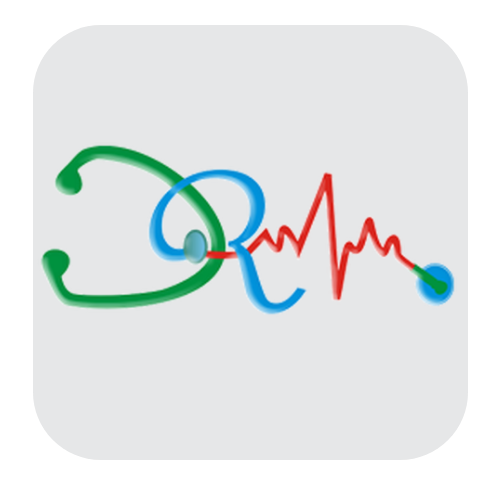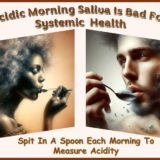Telehealth Reverse Diabetes For Infection Protection From Illness
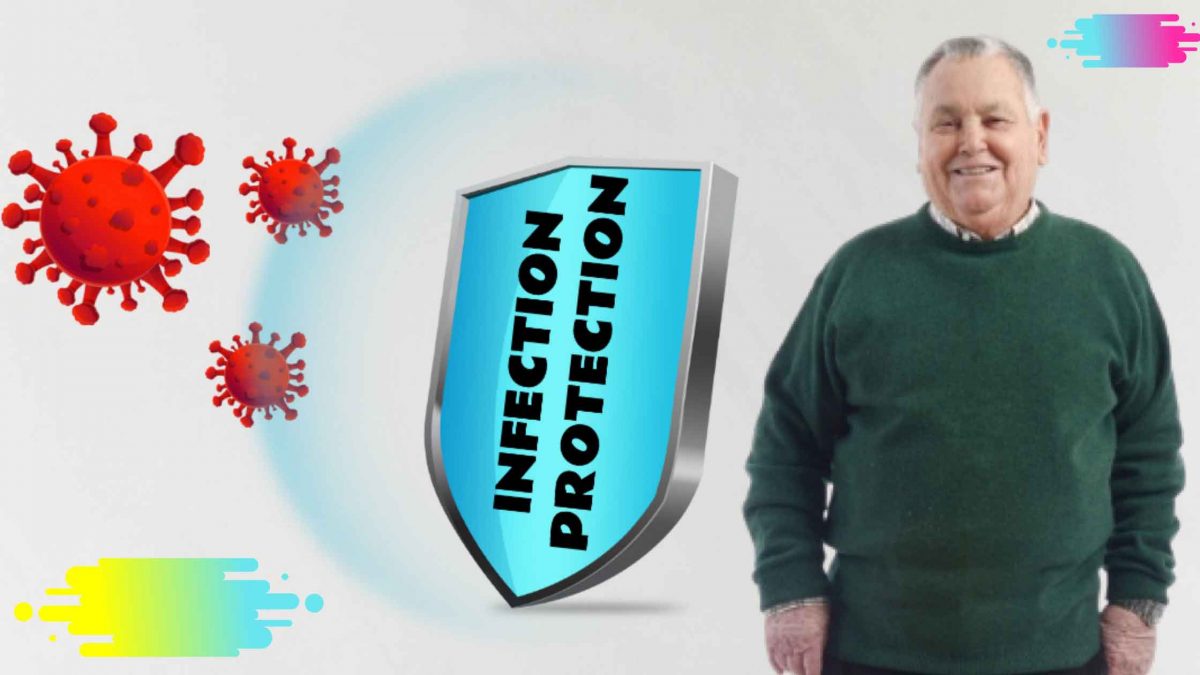
Good News! Infection with SARS-CoV-2 won’t make you sick if you stay lean and keep strong. Maximum waist circumference less than 50% of height. Resting heart rate less than 60. Hi-sensitivity C-Reactive Protein less than 2. Get plenty of rest and don’t kiss someone if you don’t really know it’s safe.
Let us help you protect yourself from COVID-19 and any other respiratory viral illness.
To learn more about programs Herd Healthcare offers, our website is:
www.herdhealthcare.com
COVID-19 really makes it clear that overeating and under-exercising is bad for your health. Type 2 diabetes also makes that clear. It just takes longer.
We expect about 5 to 10% new coronavirus infections every year. Less than influenza but more severe.
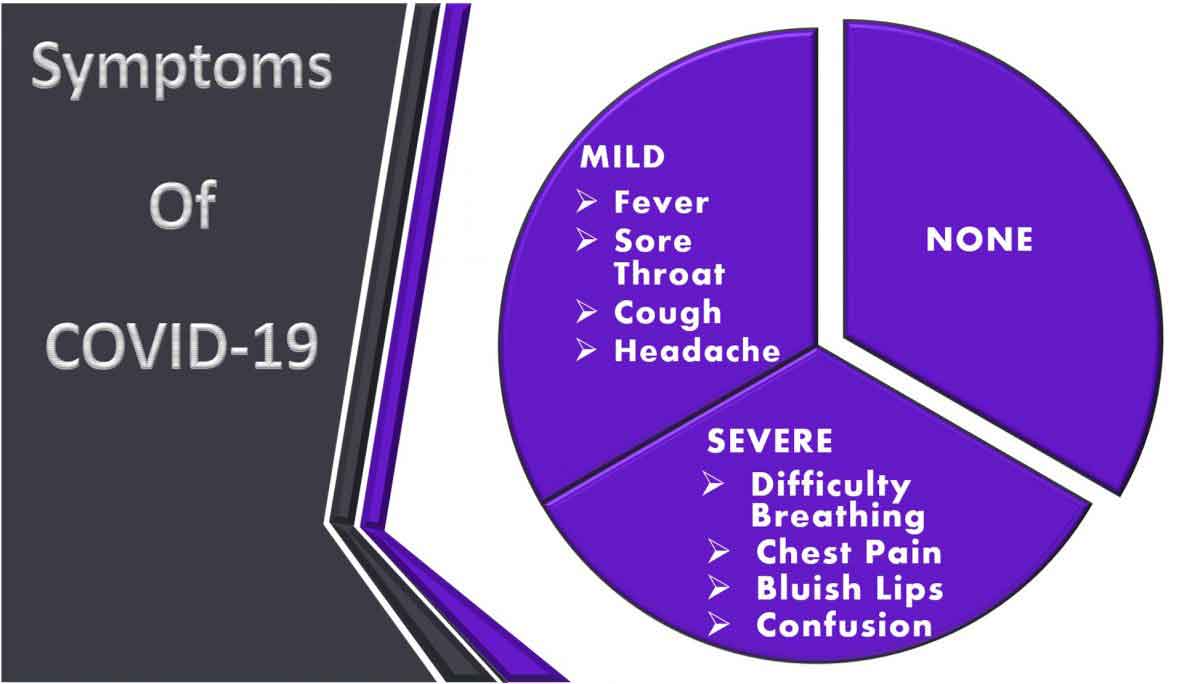
About 1/3 of those infected will be healthy and won’t ever have symptoms. Another 1/3, not so healthy, will have symptoms they get over in a week or two. The other 1/3 with poor health will be severely ill and have to be hospitalized. Of those who are hospitalized, about one in ten won’t recover.
Remember! Everyone will be infected eventually or successfully vaccinated.
About 5 to 10% new infections every year. May not seem much of a risk. But no one knows just when they’ll be infected. For those with poor health in the group at risk for severe illness, will it be before or after there’s successful vaccination? The problem for the group with poor health is that fully successful vaccination is a long way off.
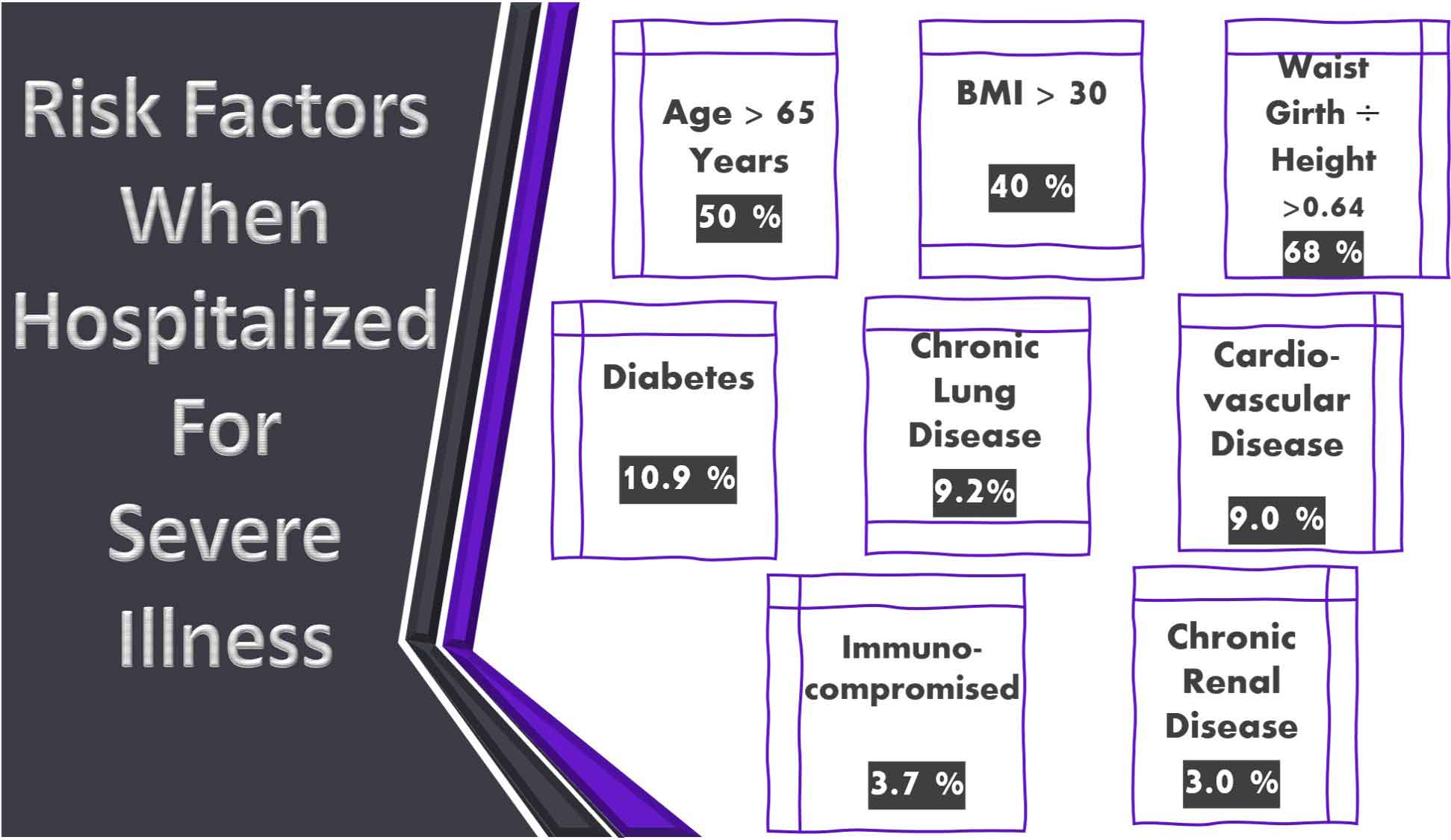
Features of those in the group with poor health and severe risk are well known. They include older more than younger, hypertension, diabetes, obesity, other chronic diseases and poor immune function. High-risk features include abdominal obesity with hyperactive inflammation and little resistance to COVID-19.
An important feature of patients with COVID-19 in New York is the severe effect of obesity. Under 60 years of age, obese patients were twice as likely to be hospitalized as those who were not obese. In hospital, those with mild obesity were twice as likely to be admitted to Intensive Care Units. Patients under 60 years of age with severe obesity were 4 times as likely to be admitted for Intensive Care.
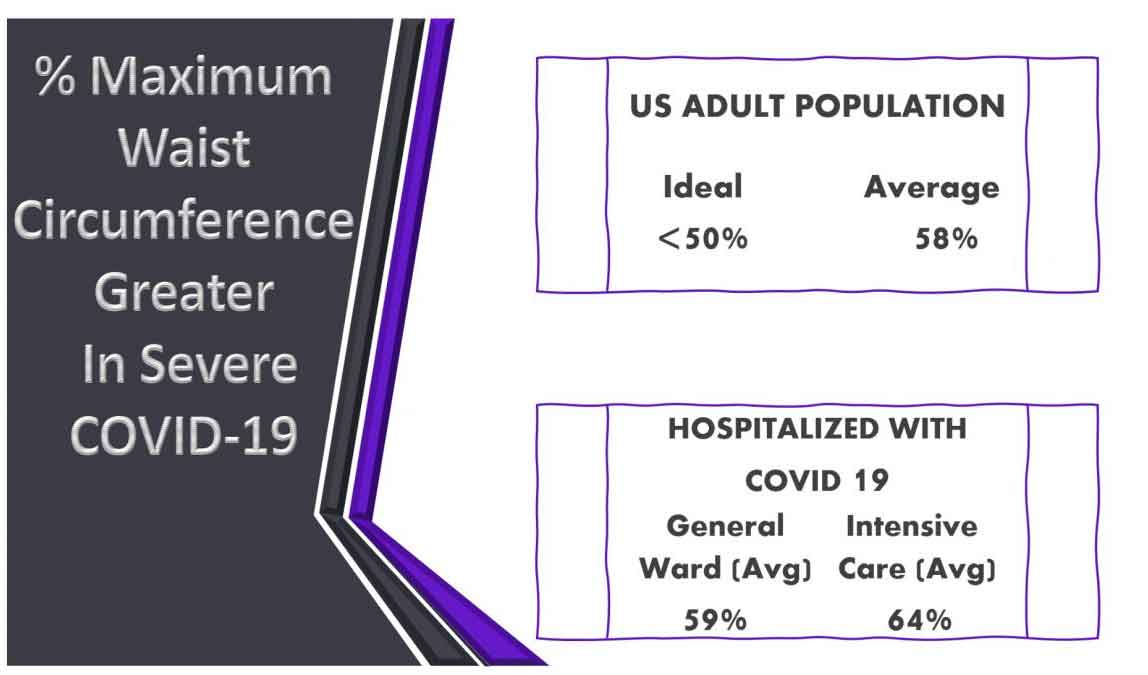 Abdominal visceral fat is particularly dangerous for severe COVID-19. Average maximum waist circumference for adults in the US, is 58% of height. That’s not ideal. The ideal for normal healthy men and women is less than 50%.
Abdominal visceral fat is particularly dangerous for severe COVID-19. Average maximum waist circumference for adults in the US, is 58% of height. That’s not ideal. The ideal for normal healthy men and women is less than 50%.
Measurements of 30 men and women admitted to hospital with COVID-19 showed waist circumferences 59% of height. Those so sick they needed mechanical ventilators for breathing showed waist measurements 64% of height.
Overfilled, unhealthy fat tissue secretes proteins that circulate in the blood. They not only attract immune cells they also stimulate the liver to produce protective proteins. These include C-Reactive Protein which circulates because of infection somewhere in the body.
Normal levels of C-Reactive Protein in blood are less than 3 mg/L. They can increase up to 1,000 times at sites of infection or inflammation. Elevations of 3 to 10 mg/L occur in about one third of adults in this country.
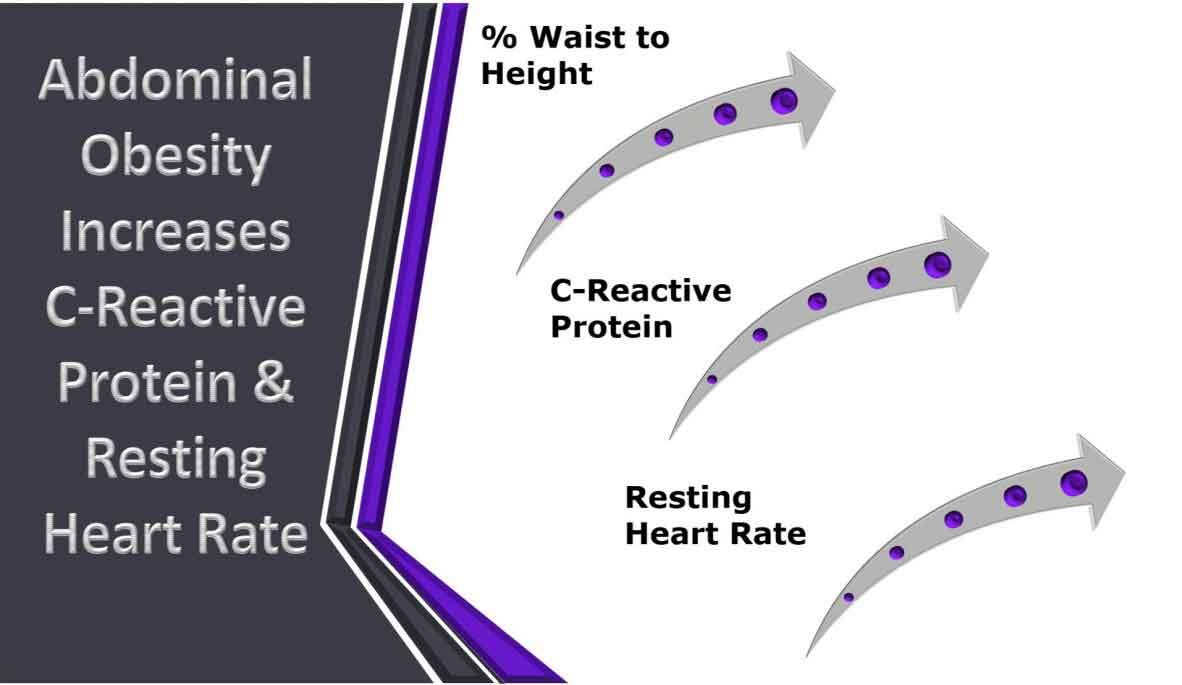
Abdominal obesity increases C-Reactive Protein. Even in people with average weight. Maximum waist circumference more than 50% of height frequently causes levels of C-Reactive Protein more than 3 mg/L.
Abdominal obesity also increases Resting Heart Rate. Maximum waist circumference more than 50% of height usually causes Resting Heart Rate more than 60 bpm.
The strong relation between Resting Heart Rate and C-Reactive Protein was studied with more than 6,000 participants from 6 communities in the US. Subjects were men and women who did not have any clinical evidence of chronic disease. They did not eat anything for 12 hours and were resting before they had an electrocardiogram. Venous blood was drawn and analyzed for level of high sensitivity C-Reactive Protein. Data from subjects with levels higher than 10 mg/L were excluded from the analysis.
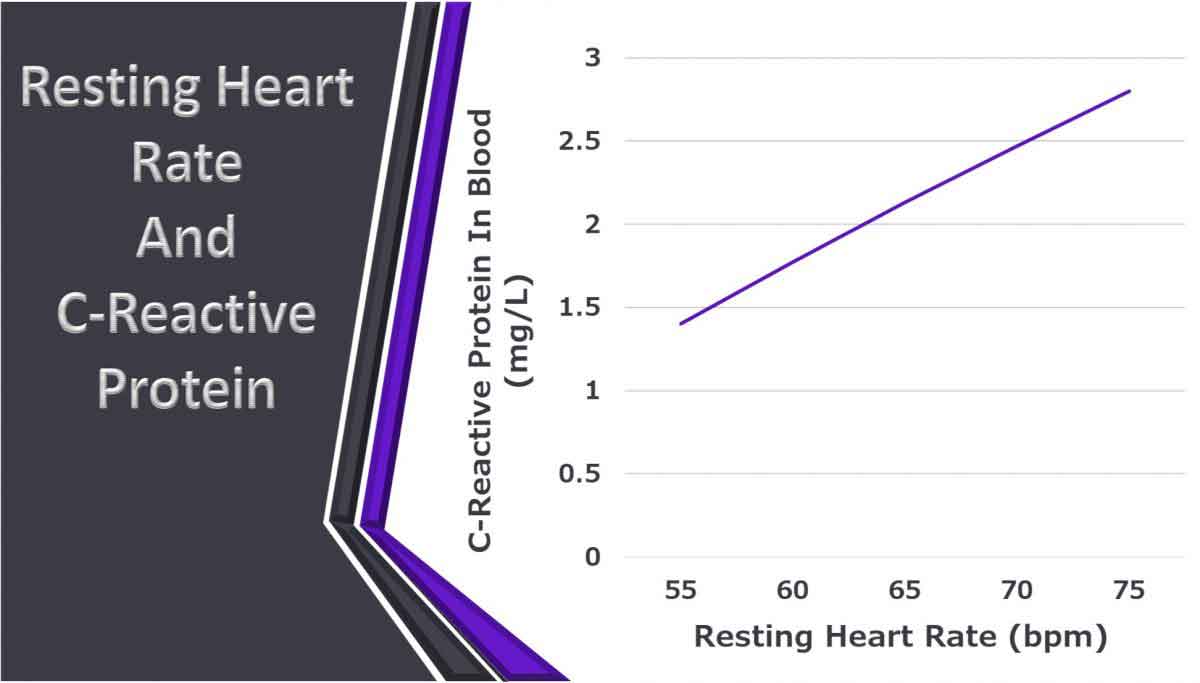
As shown in the figure, an increase in Resting Heart Rate was related to an increase in C-Reactive Protein. Those with a Resting Heart Rate less than 60 bpm had levels of C-Reactive Protein less than 2 mg/L.
These results show that levels of C-Reactive Protein are related to levels of Resting Heart Rate. Both maximum waist circumference and resting heart rate are easily measured. They can be used to detect abnormal inflammation in overfilled abdominal visceral fat. Then measurement of C-Reactive Protein can be used for confirmation.
Chronic inflammation continues to destroy and clear out fat cells that are damaged. It’s a natural reaction to unhealthy conditions but it attacks host tissue. Fat cells keep building up and chronic inflammatory cells keep destroying host tissue. The immune system overreacts. That takes over and leaves natural immune function poorly prepared to protect against viral infection.
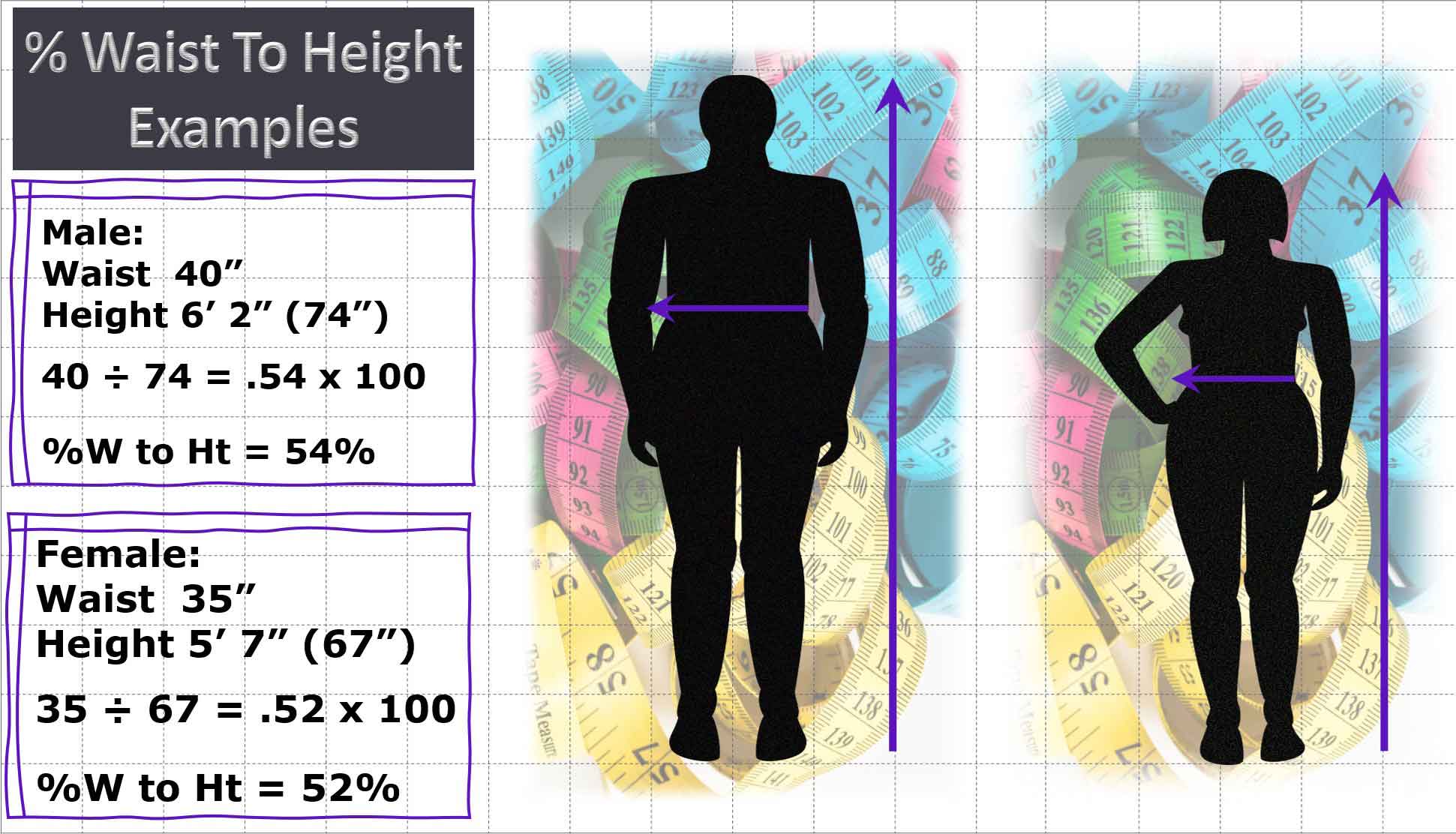
Maximum waist circumference should be less than 50% of height. Resting heart rate should be less than 60 bpm. The combination makes it extremely unlikely there is any unhealthy abdominal visceral fat. Control of abdominal obesity protects against illness from COVID-19. It reduces chronic inflammation and restores immune function. That all reduces levels of C-Reactive Protein in circulating blood.
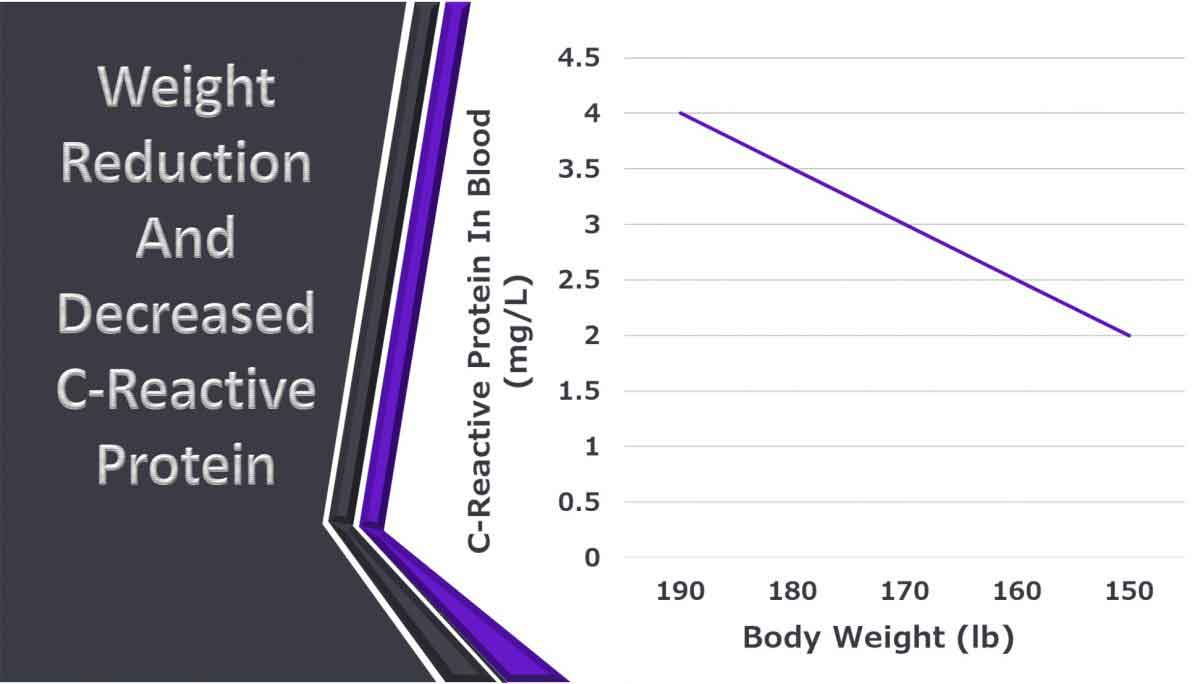
Results from 33 clinical studies show the effect of weight reduction on C-Reactive Protein. The relation in over 2,000 men and women is summarized in this Figure. The average weight for all participants before weight loss was 190 lb and the average level of C-Reactive Protein was 4 mg/L. Combining and extending average loss down to 155 lb showed reduction in C-Reactive Protein of 50%. A weight loss of 18% reduced levels of C-Reactive Protein to safe levels under 2 mg/L.
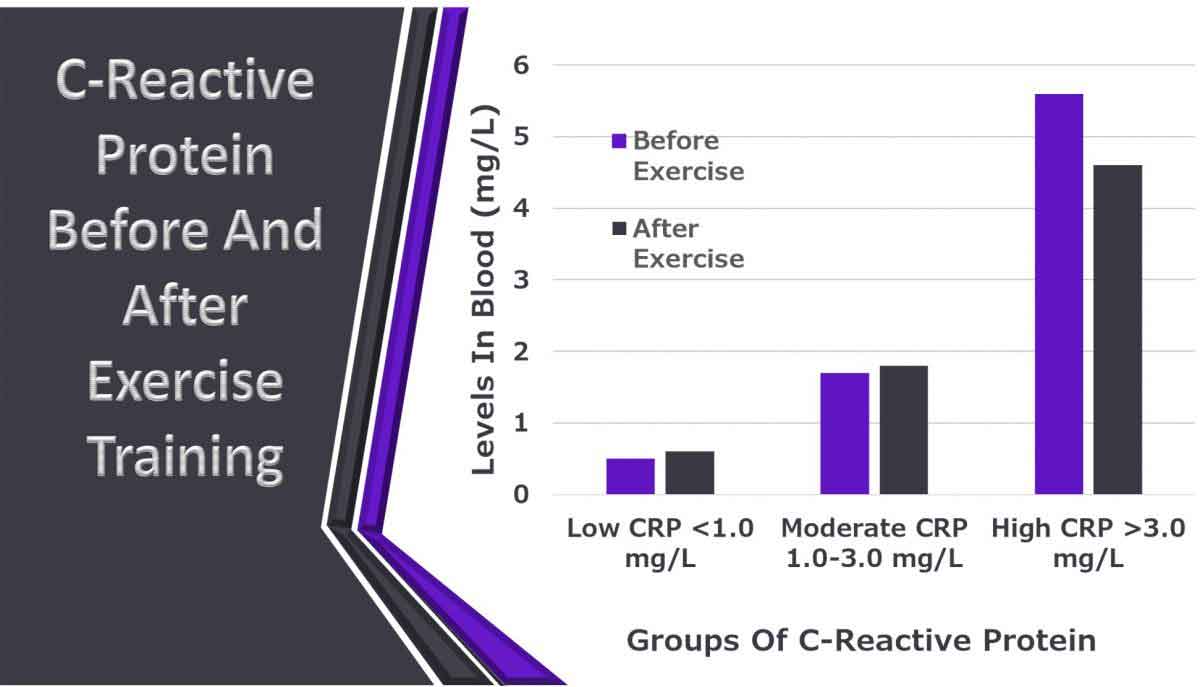
Exercise training also reduces high blood levels of C-Reactive Protein in healthy adults. A clinical study of 652 men and women in US and Canada showed the effects of aerobic exercise training on C-Reactive Protein. Sedentary healthy adults trained on exercycles 3 times a week for 20 weeks. Before training, about 1/3 had blood levels less than 1 mg/L, about 1/3 had levels from 1 to 3 mg/L and the third group had levels more than 3 mg/L.
The main result, shown in the Figure, is that aerobic exercise by sedentary healthy adults with high levels of C-Reactive Protein reduced levels about 1 mg/L. Without any change in body weight.
Combined with reduced food intake, aerobic exercise reduces body weight and further reduces levels of C-Reactive Protein.
Overeating and Under-exercising are strong causes of poor resistance to illness from viral infection. But there are other causes. Genetic abnormalities, allergic responses and chronic illnesses. Without abdominal obesity, poor immune function still has high blood levels of C-Reactive Protein. That can be measured. But what if it hasn’t been measured.
High Resting Heart Rate gives the important signal there’s poor protection from viral infection. Resting Heart Rate more than 60 bpm. Maybe even so high as 100 bpm. Persistent high resting heart rate can be checked against levels of C-Reactive Protein.
Infection Protection from Illness happens naturally for probably half of all normal healthy adults in the US. Most of those who are not protected have abdominal obesity. 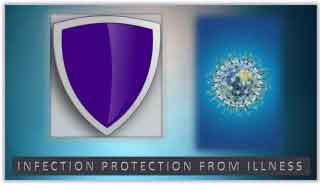
We’re all hoping there’ll be effective vaccination for everybody. Especially for those with poor health and high levels of high-sensitivity C-Reactive Protein.
That’s still a long way off. Also, vaccination may prevent illness but not prevent virus infection and transmission. And even that may only last a year or two. Influenza vaccination only protects from illness for about 6 months.
Good health is the best protection from illness. We know how to avoid overeating and increase exercising. We can help everyone do that.
 We are pleased to share our blog articles with you, and we are always interested to hear from our readers. Our website address is: www.herdhealthcare.com
We are pleased to share our blog articles with you, and we are always interested to hear from our readers. Our website address is: www.herdhealthcare.com
